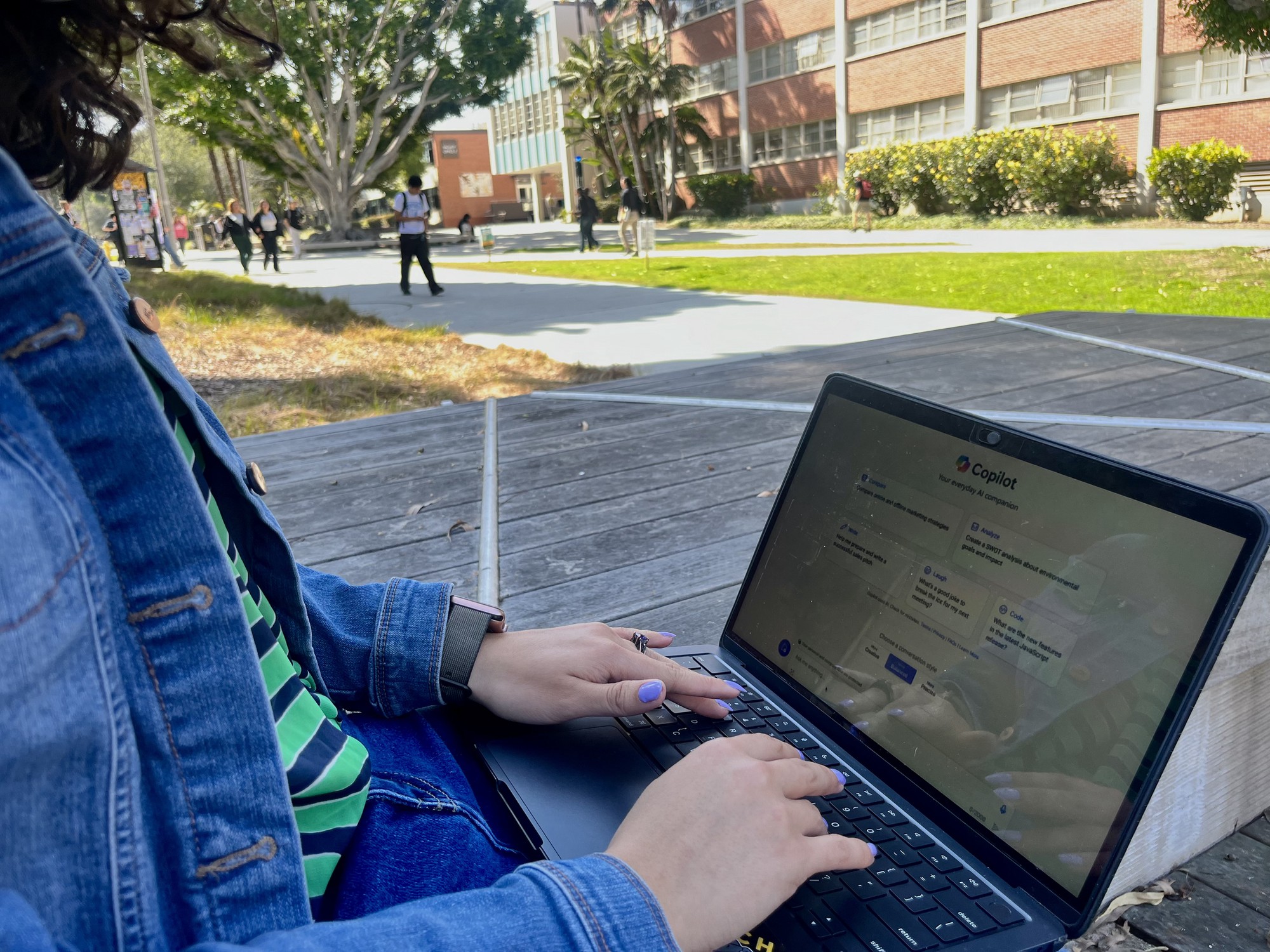The Long Beach State community is divided over the integration of AI technology
By: Nate Martinez and Ava Domenicelli The Long Beach State community is divided over the integration of AI technology into classrooms, with some believing it could be beneficial or hinder learning. The AI Steering Committee was formed to provide guidance for the research, evaluation, and implementation of AI technologies at CSULB. Long Beach state Chancellor Karin Skisom Gunn, who also serves as co-chair of the AI *Committee, stated that the university is still in the process of implementing AI in classrooms. However, the decision to implement AI will be left to individual professors. Some argue that reliance on AI without understanding how it produces its responses is another potential pitfall in using the technology. Linguistics professor Sarvenaz Khatami is a proponent of incorporating AI into teaching methods and is currently using it to teach a second language.

Published : one year ago by admin in Tech
It remains uncertain whether the Long Beach State community will embrace generative artificial intelligence (AI)-based technology in the classroom as a beneficial asset or a hindrance to learning.
The AI Steering Committee was formed at CSULB “to provide guidance for the research, evaluation, and implementation of AI technologies,” according to their website.
Long Beach State Chancellor Karin Skisom Gunn, who also serves as co-chair of the AI Steering Committee, explained how the university’s position on the integration of AI is reflected in the committee’s decisions.
“Essentially, faculty members need to communicate to students how artificial intelligence will be used in a classroom environment,” Gunn said in an email to the Daily Forty-Niner.
According to Gunn, the university is still in the process of determining the specifics of how this will play out in the classroom.
In the meantime, the decision to implement AI will be left to individual professors.
“We’re still in the early stages and having critical conversations about what the deployment of AI might look like,” Gunn said. “As of now, we’ve launched campus-wide access to Copilot, which uses GPT-4 and comes with an extra layer of data protection for all campus users.”
Beth Lessen, vice president for student affairs and co-chair of the AI Steering Committee, looks forward to the expansion of AI technology at Long Beach State.
“It has a lot of potential and could be used in so many ways,” Lesen said in an email to the Daily Forty-Niner. “Personalized AI assistance can keep students engaged and motivated and lead to improved learning performance and greater academic success.”
Professor of Psychology Gabriela Hancock specializes in human factors psychology, with a particular focus on human-machine interactions.
“If you just go and click a few buttons, those aren’t the skills you’re developing,” Hancock said. “It comes at the cost of not practicing for yourself. This is a disservice to the student.”
Hancock also raised questions about ethics that AI may lack.
“I have a lot of concerns about safety, security and cultural sensitivity.”
Hancock isn’t the only one struggling to understand how using AI is anything but an easy way out.
“It hinders your learning process,” said Lexi Thiksten, a third-year political science major and member of the AI Steering Committee. “The amount of times I’ve heard people use it is crazy.”
According to Hancock, this reliance on AI without understanding how it produces its responses is another potential pitfall in using the technology.
“We want to take advantage of those qualities where machines excel at us, but if we don’t know how they’re doing, what they’re doing, we can’t judge the quality of what they’re putting out,” Hancock said. “This is getting dangerous.”
Linguistics professor Sarvenaz Khatami, on the other hand, is a proponent of incorporating AI into teaching methods at CSULB and is currently using it to teach a second language.
On her faculty spotlight page, she posts numerous videos to educate people about the benefits of applying AI.
“We all know that language learners typically have limited opportunities to practice language use and receive feedback,” Khatami said in his video How Chat GPT Benefits Language Students. “However, ChatGPT can be a wonderful tool to address this limitation.”
Students can participate in as many ChatGPT conversations as they want, whenever and wherever they want. According to Khatami, they can choose their learning environment to remove any fear of making mistakes.
Khatami also said that students can specify their desired fields of study and proficiency level by providing the AI with guidance.
Typically, these types of assignments require one-on-one sessions with a teacher, which is why Khatami believes ChatGPT can save time and be a huge benefit to educators.
“There is some evidence that ChatGPT can help reduce the daily workload of instructors by making certain time-consuming and repetitive tasks easier,” Khatami said in his video, “How Language Teachers Benefit from ChatGPT.”
With a few sentences, teachers can instruct ChatGPT to simplify reading texts, generate tests, quizzes, assessments, and provide feedback for students.
“Although I still had to review and revise the output of these assignments, it still saved a significant amount of time,” Khatami said in his video, “How Language Teachers Benefit from ChatGPT.”
Although the use of ChatGPT and other generative systems has presented mutual benefits for both the student and the teacher, the timeliness of the technology leaves room for questions.
“Although current studies show the effectiveness of ChatGPT in language teaching and learning, the evidence is still very limited and there is still a need for further investigation,” Khatami said in his video, “What Dr. Khatami Cares About the Future of ChatGPT .”
Lesen also expressed caution about the use of AI technology in the future.
“Remember that AI is still developing and what you get from it can be unreliable and incorrect, so we have to use it carefully,” Lessen said. “It’s meant to help us, not replace us.”
Topics: AI
